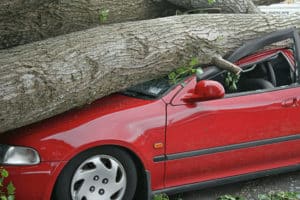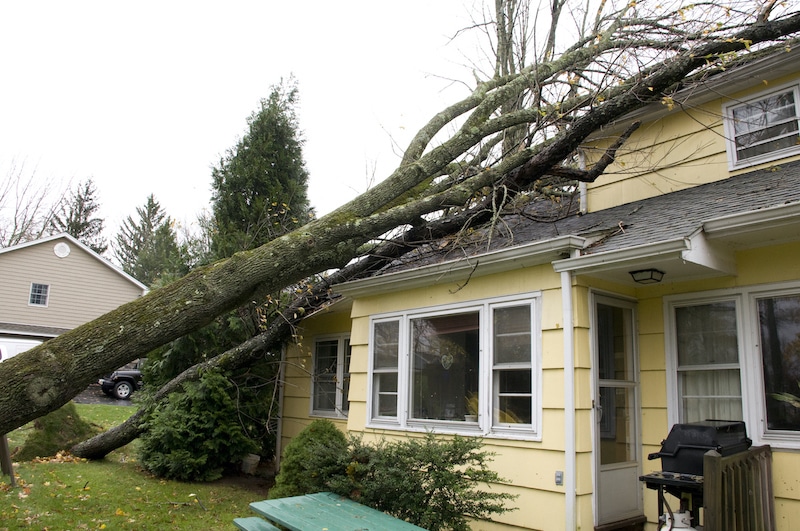Western Washington windstorms can pack a powerful punch, causing power outages and damage to homes and cars. And they often lead to a question we hear frequently in our agency:
Is windstorm damage covered on a standard homeowner’s policy?
The quick answer is: Yes. Windstorm is a covered peril on a standard homeowner’s insurance policy. The more interesting question, however, is often: WHOSE homeowner’s insurance policy covers the loss?
We love the example of the falling tree: It’s relevant, it’s one of the most frequent windstorm-related claims, and it’s easy to imagine. Here are a few scenarios:
Scenario #1: Your tree falls on your house
If your tree falls on your house, your homeowner’s policy will provide coverage for any damages up to your policy limits (after you pay your deductible.) This coverage extends to cover damage to your main home, garage, shed or other additional buildings, and structures such as a fence. If there is damage to a structure, debris removal is also covered, up to policy limits.
However, if your tree comes down in your yard during a windstorm without causing any damage to your house or structures, your homeowner’s policy will not pay for debris removal. You are responsible to take care of the removal of the tree.
Scenario #2: Your tree falls on your neighbor’s house
If your tree falls on your neighbor’s house, the basic (and almost always applied) rule is that the insurance policy of the property that was damaged pays for the loss. In other words, if your tree falls on your neighbor’s house, your neighbor’s homeowner’s insurance covers the damage to your neighbor’s house.
Scenario #3: Your neighbor’s tree falls on your house?
As in Scenario #2, the policy of the damaged property pays. So, if your neighbor’s tree falls on your house, your homeowner’s insurance applies.
Scenario #4: You are upset because your neighbor’s tree that fell on your house was old and weak, and the damage could have been avoided (you think.)
Allow us to start with a disclaimer. This scenario is extremely rare!! If your neighbor has a tree that seems diseased, express your concerns to your neighbor. Tell them that you feel that your home is in jeopardy of being damaged. But keep in mind that a person can’t be forced to remove a tree.
If you have serious concerns about your safety, you may wish to get the tree evaluated by a professional and then send a certified letter to your neighbor requesting the removal of the tree. This will put your insurance company in a stronger position to argue your neighbor’s negligence in the event of a claim.

Scenario #5: A tree falls on the car.
If a tree falls on a car, the comprehensive coverage of the vehicle owner’s auto policy will apply. As in the examples illustrated above, generally the owner of the tree is not responsible. If your tree falls on your neighbor’s car, your neighbor’s car insurance should pay the claim if your neighbor carries comprehensive coverage. If your neighbor’s tree falls on your car, your comprehensive coverage applies.
The problem is that comprehensive coverage on an auto insurance policy can be waived, and many drivers opt to decline this important protection in order to save money. So, if you have car insurance, but you don’t buy comprehensive coverage as part of your policy, the damage from a falling tree or branch would not be covered.
Sadly, many news stories revolve around the confusion on the matter of windstorm-related damage, and citizens find themselves in unfortunate situations of a claim not being covered.
If you have questions about this or other parts of your insurance protection plan, please give us a call at 425-379-9200 or visit www.AutoHomeBoat.com for more information.

